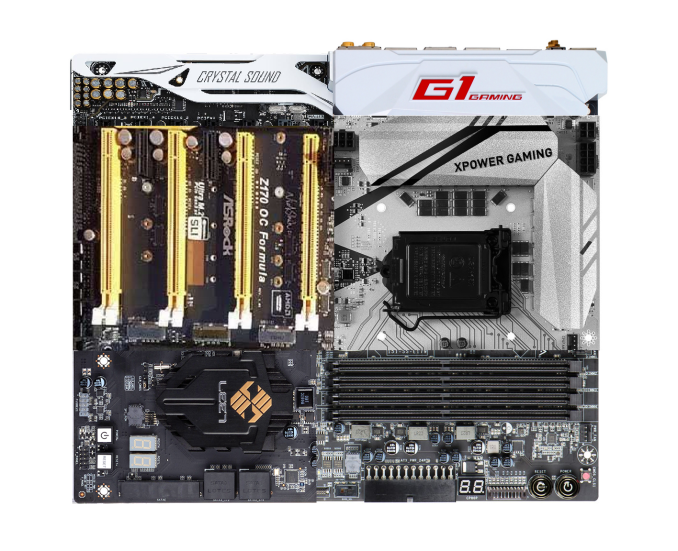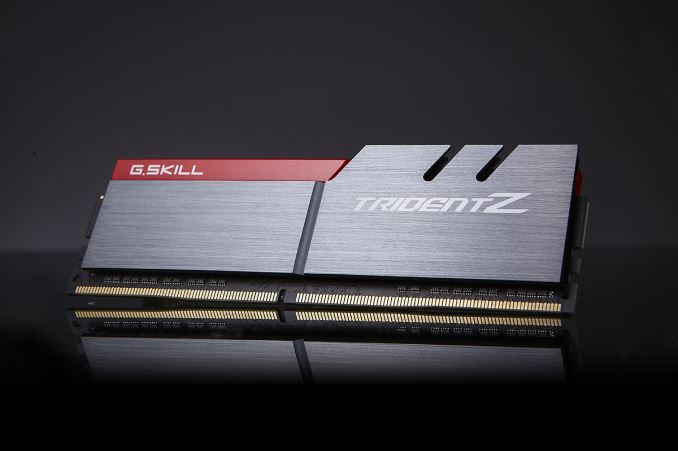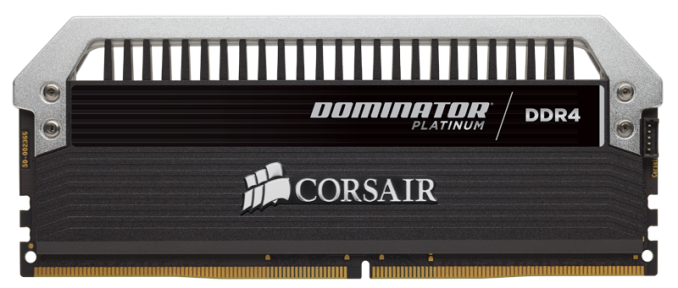The Intel 6th Gen Skylake Review: Core i7-6700K and i5-6600K Tested
by Ian Cutress on August 5, 2015 8:00 AM ESTAlso Launching Today: Z170 Motherboards, Dual Channel DDR4 Kits
The new Skylake processors are assigned a new socket – LGA1151. Intel’s policy since 2006 has been to maintain sockets for two generations and as a result moving from Broadwell to Skylake we were expecting the change. This means that Skylake processors will not work in LGA1150 based motherboards, i.e. those with Intel’s 8th and 9th generation chipsets. For Skylake we get the 100-series chipsets with additional functionality. Launching today in turn is the first member of the 100-series family, the overclocking-friendly Z170, with the other chipsets in the family to follow later in the year.
We have a large piece on the motherboards being released or talked about for Skylake, covering some 55+ products and the different variations within. The major motherboard manufacturers such as ASUS, GIGABYTE, ASRock, MSI, EVGA and a couple of others should all have a wide range ready to purchase on day one, although some models may be region specific.

The badly MSPaint’ed hybrid: MSI’s XPower Gaming Socket, GIGABYTE’s G1 Gaming IO panel, EVGA’s DRAM slots, ECS’s chipset, ASRock’s PCIe arrangement and ASUS’ Deluxe audio.
Here’s an amalgamation of some of the designs coming to end users, with almost all of them investing heavily in gaming brands with specific components to aid the user experience while gaming. Aesthetic designs are also going to be a focus of this generation, with some of the manufacturers moving into a different direction with their designs and trying some new color schemes. Some basic looking models will also be available.
Prices for Z170 motherboards will range from $80 all the way past $400+, depending on feature set and size. A number of motherboards above $150 will feature a couple USB 3.1 Gen 2 (10Gbps) ports, although you will have to check whether they are Type-A or Type-C. That being said, most motherboards with USB 3.1 will use both, but there are a select few that are C-only or A-only. Also over $150 we will see a lot of Intel’s new network controller, the I219-V, although the gaming lines might invest in Rivet Network’s Killer solution instead.
Intel is launching the Alpine Ridge controller at this time as well, which is said to support USB 3.1 Gen 2, Thunderbolt 3, HDMI 2.0, DisplayPort, and DockPort. According to our sources it would seem that GIGABYTE currently has an exclusive on this technology, and it will be used for their USB 3.1 Gen 2 ports on most motherboard models. Other functionality from the Alpine Ridge controller (TB3, HDMI 2.0) will be on a case-by-case basis depending on how the controller works in two different modes or if extra components are used. We are told that Alpine Ridge costs similarly to the ASMedia ASM1142 controller, but will enable two USB 3.1 Gen 2 ports at 10 Gbps simultaneously as it uses four PCIe lanes from the chipset.
We will go more into the 100-series chipset in the next page, but it is worth mentioning briefly here that the speed between the CPU and the chipset has increased from DMI 2.0 (5 GT/s, 2GB/sec) to DMI 3.0 (8 GT/s, 3.93GB/sec), and that the chipset has a new high speed hub (HSIO) that allows 26 lanes to be used from it although some lanes are limited (e.g. 20 PCIe 3.0 lanes maximum split into five x4 controllers). Intel’s Rapid Storage Technology is upgraded as well to give three PCIe drives access to its features as long as they are on the correct HSIO ports.
DRAM: The March to DDR4
In the world of DRAM for personal computers, DDR3 is currently king. Having been the main standard since 2007, you would be hard pressed to find a mainstream or low end platform sold that did not require access to DDR3. That changed in the enthusiast segment last year with the launch of Haswell-E which also introduced DDR4 at a high premium. For Haswell-E there was no crossover – you had no choice but to use DDR4 (unless you might be a million-unit customer).
Because the consumers and consumer product OEMs are more price sensitive, DDR4 will be a slower transition. There is precedent here in that the move from DDR2 to DDR3 saw a generation of processors that supported both standards and it was up to the motherboard manufacturer to design for it. In this transition, Skylake processors will support both DDR3L and DDR4 modules, with a few caveats.
Caveat number one is that initially, only DDR4 motherboards will be on the market. So if you upgrade now, DDR4 needs to be on the shopping list as well. We have had word of some DDR3L-only motherboards coming, as well as combo boards with DDR3L and DDR4 slots on board. Caveat one-point-five, you can use either DDR3L or DDR4, but not both at the same time.
Caveat number two, DDR3L is different to DDR3 as it operates at a lower voltage. This means that the memory controllers on Skylake most likely have a combined voltage domain, and regular DDR3 might not work (in fact early testing suggests not without reducing the voltage). Very few people currently own DDR3L DIMMs, so the likelihood of a user performing an upgrade while reusing their RAM might be slim.
Caveat number three: prices of DDR4 have dropped significantly since last year, and there is only a small premium over DDR3. The benefits of DDR4 include a lower operating voltage, a more stable design, and the ability to purchase 16GB modules with ease. That means that a Skylake platform will happily take 64GB of memory.
With that last point, we should point out that Skylake is a dual memory channel architecture, supporting two memory modules per channel. This gives a maximum of four DDR4 tests, and 4x16 = 64GB maximum.
We have been told that Skylake’s memory controller, compared to previous generations, is absolutely golden at higher speed memory support. By default Skylake supports the JEDEC standard for DDR4, 2133 MT/s at a latency of 15-15-15, but the overclocking guides we have received suggests that all processors should be able to reach DDR4-3200 relatively comfortably, with a few processors in the right motherboards going for DDR4-4000. While this should bode well for integrated graphics users, those high end kits are typically very expensive.
We currently have dual channel kits in to test from a number of the DRAM companies, and plan on performing a memory scaling article within the next few weeks to see how exactly performance might scale on Skylake. Though in the meantime, as part of this review, we were able to source a closed beta variant of a combination DDR3L/DDR4 motherboard for Skylake and have included a test comparing the two.












477 Comments
View All Comments
wishgranter - Wednesday, August 5, 2015 - link
Ian, for the overclocking lok here. a better ES samplehttp://www.guru3d.com/articles_pages/core_i7_6700k...
Khenglish - Wednesday, August 5, 2015 - link
It's a shame this doesn't have the 128MB L4 cache. It obviously helps Broadwell over Haswell in CPU benchmarks. If Skylake had it it'd be a clear and very significant upgrade over Haswell, but without it it's just too minor to warrant an upgrade over Haswell or Ivy Bridge.Brazos - Wednesday, August 5, 2015 - link
Is this what happens when AMD stops being a competitor?And I agree with the comments about the IGPU. Most enthusiasts will purchase a graphics card. Save money, space etc by dropping it.
Jumangi - Wednesday, August 5, 2015 - link
Welcome back to the early 2000's when Intel could put out miniscule upgrades while charging premium prices because of the lack of any real competition.A 25% increase over a 4 year old CPU...pathetic.
Gigaplex - Wednesday, August 5, 2015 - link
AMD was very competitive early 2000s.zodiacfml - Thursday, August 6, 2015 - link
Hmm, you kind have a point. Though Intel is relentless with innovation as to chase their dreams on mobile and server market, Skylake architecture seems optimized for server/computing applications. I think it has been that way for many years already. Maybe, the overclocking support Intel is giving to enthusiast is a sign of this. If AMD were competitive, Intel wouldn't have to optimize too much on the server/computing performance.I'm baffled, there's obvious IPC increase and massive improvements in multithreading/Handbrake, but doesn't show in games. With DX12, I doubt it will help.
Eidorian - Wednesday, August 5, 2015 - link
I am frankly looking at Skylake for the platform as a whole. The improvements between generations are not amazing and disconcerting for gaming but I am coming from a Lynnfield + P55 system built in 2009. This is going to be great for me. I can still see users on Sandy Bridge + P67 holding on to those systems a little longer.postem - Wednesday, August 5, 2015 - link
I was reluctant to upgrade to devils canyon, from 950 Bloomfield due to this 6 month proximity to skylake.I never had severe performance issues with the 950 @ 4.2 Ghz, but since i started to use a 980 i saw the frames consistently dropped below.
When i finally updated to 4790K, man it was good. Not only better response on overall processing, better frames, much faster in all aspects.
Bottom line: i dont think you need to upgrade each generation. I would gladly gone to Haswell-E if it wasnt so $$$, but anyway, DC is giving me a hell of performance, and i dont think its worth considering to ugrade it to skylake. It just sucks intel changed the whole socket because of a pin.
If you are comming from a 3-4 generations before, you will really see the benefits from the upgrade i can assure you. I cant say its the end of Sandy Bridge, but its coming to its age.
What really is getting nice is to have good cpus with minimal TDP on laptops. You can have a broadwell i5 with low as 10W consumption.
MrSpadge - Wednesday, August 5, 2015 - link
Ian, could you please undervolt the chips? I know you reported 1.20 v at 4.3 GHz as "undervolting", but that's far more than I'd give even a 32 nm CPU and is just considered low because the stock voltage is so insanely high. Give us a few more data points until about 4.0 GHz, please.Flunk - Wednesday, August 5, 2015 - link
I've got a 2500K overclocked to 4.4Ghz @ 1.2v.